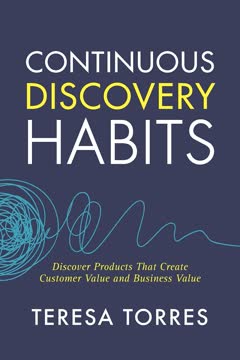Key Takeaways
1. Branding is a powerful tool that shapes perceptions and drives decisions
From humble beginnings as a mark on cattle to today's all-encompassing global ideas, the notion of something 'being branded' has moved a long, long way in a short space of time.
Branding permeates our lives. It influences our choices, from the clothes we wear to the technology we use. Effective branding goes beyond logos and taglines – it creates emotional connections and shapes how people perceive and interact with companies, products, and even ideas.
The power of branding is evident across industries:
- Consumer goods: Apple's sleek design and user-friendly interface create brand loyalty
- Services: Starbucks sells an experience, not just coffee
- Non-profits: UNICEF's brand helps raise awareness and funds for children worldwide
- Personal branding: Celebrities and politicians carefully craft their public image
Branding has evolved from simple product differentiation to a complex discipline that encompasses strategy, psychology, design, and storytelling. It's a critical business asset that can drive customer loyalty, command premium prices, and provide a competitive edge in crowded markets.
2. Effective branding starts with thorough research and market analysis
Every branding project starts somewhere and too often they start in the wrong place. So where is the right place to start? With in-depth and thorough research.
Research lays the foundation. Before diving into design or strategy, it's crucial to understand the current market landscape, consumer perceptions, and competitive positioning. This investigative phase helps identify opportunities and potential pitfalls.
Key research components include:
- Brand audits: Assessing current brand assets and performance
- Competitor analysis: Identifying strengths and weaknesses of key players
- Consumer insights: Understanding target audience needs and preferences
- Market trends: Anticipating future shifts in the industry
Effective research techniques:
- Surveys and focus groups
- Social media listening
- Data analytics
- Expert interviews
By starting with a comprehensive research phase, brands can make informed decisions and develop strategies grounded in real-world insights rather than assumptions.
3. A strong brand narrative communicates purpose and values
Why are we here? Our ambition
Purpose drives brand story. A compelling brand narrative goes beyond what a company does to articulate why it exists and what it stands for. This narrative forms the foundation for all brand communications and helps create emotional connections with audiences.
Elements of a strong brand narrative:
- Core purpose: The fundamental reason for the brand's existence
- Values: Guiding principles that shape behavior and decision-making
- Vision: Aspirational goals for the future
- Tone of voice: How the brand expresses itself
Examples of powerful brand narratives:
- Nike: "To bring inspiration and innovation to every athlete in the world"
- Patagonia: "We're in business to save our home planet"
- TED: "Spread ideas"
A well-crafted narrative provides a north star for the organization, guiding everything from product development to marketing communications and customer service.
4. Visual identity should reflect and reinforce the brand's core essence
The simplest solution, to stand out and demonstrate difference, many markets exhibit a sheep-like herd mentality.
Visuals make brands tangible. A brand's visual identity – including logos, colors, typography, and imagery – should be a direct expression of its core narrative and values. Effective visual branding goes beyond aesthetics to create instant recognition and evoke specific emotions.
Key considerations for visual identity:
- Differentiation: Standing out in a crowded market
- Consistency: Creating a cohesive look across all touchpoints
- Flexibility: Adapting to various applications and contexts
- Longevity: Designing for the long-term while allowing for evolution
Notable visual identity examples:
- FedEx: Hidden arrow symbolizing speed and precision
- Coca-Cola: Iconic script and red color that transcend language barriers
- Apple: Minimalist design reflecting simplicity and innovation
The most successful visual identities are those that not only look appealing but also communicate the brand's essence at a glance.
5. Naming and architecture are crucial elements of brand strategy
The generation and filtering of names is another part of the process that falls into the odd, blurred world of Step 2.5.
Names shape perceptions. Choosing the right name for a brand, product, or service is a critical decision that can impact its success. A strong name should be memorable, meaningful, and aligned with the brand's overall strategy.
Considerations for effective naming:
- Distinctiveness: Standing out from competitors
- Meaning: Conveying key brand attributes or benefits
- Pronunciation and spelling: Ensuring ease of use across markets
- Trademark availability: Securing legal protection
Brand architecture refers to the structure of brands within an organizational entity. It defines the hierarchy and relationships between different brands, sub-brands, and product lines.
Common brand architecture models:
- Monolithic: One overarching brand (e.g., Virgin)
- Endorsed: Sub-brands linked to a parent brand (e.g., Nestle KitKat)
- House of Brands: Separate, distinct brands under one company (e.g., Procter & Gamble)
Effective naming and architecture create clarity for customers and allow for strategic growth and brand extensions.
6. Successful implementation requires consistency and flexibility
Even the most well-intentioned design scheme and enlightened client cannot rein in a brand once it starts to get out of control.
Execution brings brands to life. Implementing a brand strategy requires balancing consistency to build recognition with flexibility to adapt to different contexts and evolving needs. This phase involves creating guidelines, assets, and systems that allow for cohesive brand expression across all touchpoints.
Key elements of brand implementation:
- Brand guidelines: Documenting rules for visual and verbal expression
- Asset creation: Developing logos, templates, and other brand materials
- Training: Educating employees and partners on brand usage
- Governance: Establishing processes for maintaining brand integrity
Successful implementation strategies:
- Create modular systems that allow for creativity within defined parameters
- Develop digital asset management tools for easy access to brand resources
- Regular brand audits to ensure consistency and identify areas for improvement
Brands like Airbnb and Google demonstrate how flexible systems can maintain a strong identity while adapting to diverse applications and evolving over time.
7. Brands must continually evolve and engage to stay relevant
For some organizations, embedding a brand's 'idea' has to take place 'in public' — you can't go off for a corporate retreat to 're-visit and re-boot' if you're open 364 days a year.
Adaptation ensures longevity. In today's fast-paced world, brands can't remain static. Successful brands continuously evolve to stay relevant while maintaining their core essence. This requires ongoing engagement with customers, employees, and the broader culture.
Strategies for brand evolution:
- Regular brand health assessments
- Monitoring cultural trends and shifts
- Gathering customer feedback and insights
- Iterative design and messaging updates
Examples of successful brand evolution:
- Lego: Expanding from physical toys to digital experiences and movies
- MTV: Shifting focus from music videos to reality programming
- Burberry: Reinventing a heritage brand for the digital age
Engaging audiences through storytelling, experiences, and two-way communication helps keep brands fresh and fosters emotional connections. This ongoing dialogue allows brands to remain dynamic and responsive to changing needs and expectations.
8. Digital transformation has revolutionized brand experiences
A digital environment can even make us question what physical form a logo can or should take.
Digital reshapes brand interactions. The rise of digital technology has fundamentally changed how brands connect with audiences. From social media to e-commerce to virtual reality, digital platforms offer new opportunities for brand expression and engagement.
Impact of digital on branding:
- Increased touchpoints: Brands must maintain consistency across numerous digital channels
- Real-time interaction: Social media allows for immediate customer dialogue
- Data-driven insights: Analytics inform brand strategy and personalization
- New brand assets: Logos must work at tiny sizes (favicons) and in motion
Examples of digital-first branding:
- Spotify: Algorithmic playlists create personalized brand experiences
- Amazon: User reviews and recommendations build trust and loyalty
- Netflix: Data-driven content creation aligns with audience preferences
Successful brands embrace digital transformation not just as a marketing tactic, but as a fundamental shift in how they create value and build relationships with customers.
9. Cultural sensitivity is key for global brand expansion
An increasing challenge when implementing brands globally is the need to be able to adapt famous marks into several languages.
Local nuance matters globally. As brands expand internationally, they must navigate complex cultural differences while maintaining a cohesive global identity. This requires a deep understanding of local markets and the flexibility to adapt brand elements appropriately.
Considerations for global branding:
- Language: Ensuring names and taglines translate effectively
- Visual symbolism: Avoiding imagery with negative cultural connotations
- Color associations: Understanding different meanings across cultures
- Legal requirements: Navigating trademark and regulatory issues
Successful global brand strategies:
- Glocalization: Adapting global brands to local markets (e.g., McDonald's menu variations)
- Cultural brand archetypes: Using universal stories that resonate across cultures
- Transcreation: Creatively adapting brand messages for cultural relevance
Brands like Coca-Cola and IKEA demonstrate how to maintain a strong global identity while respecting and embracing local cultural nuances.
10. Measuring brand impact helps refine strategies and prove value
If an organization gathers enough data about itself pre re-brand and then gathers again post-change, a brand project should see more awareness, more funds raised, more products sold (whichever indicators have been deemed to be key).
Metrics drive improvement. Measuring the impact of branding efforts is crucial for refining strategies and demonstrating value to stakeholders. While some brand effects can be intangible, there are numerous ways to quantify brand performance and ROI.
Key brand metrics:
- Brand awareness: Recognition and recall among target audiences
- Brand equity: The value premium associated with a brand name
- Customer loyalty: Repeat purchases and brand advocacy
- Financial performance: Revenue growth, market share, and profitability
Measurement tools and techniques:
- Brand tracking surveys
- Social media sentiment analysis
- Customer lifetime value calculations
- Brand valuation methodologies
By consistently measuring and analyzing brand performance, organizations can make data-driven decisions to optimize their branding strategies and justify investments in brand-building activities.
Last updated:
Review Summary
Branding receives mostly positive reviews, with readers praising its comprehensive overview of the branding process, beautiful design, and practical examples. Many find it an excellent introduction for beginners, while some experienced professionals appreciate it as a refresher. The book's strengths include its clear structure, visual appeal, and real-world case studies. Some readers note that it lacks depth in certain areas, but overall, it's considered a valuable resource for understanding branding concepts and strategies.
Similar Books










Download PDF
Download EPUB
.epub digital book format is ideal for reading ebooks on phones, tablets, and e-readers.




